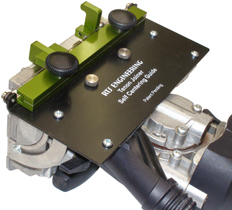I've ordered my Domino 500 and looking forward to putting it through its paces on a project with well over 150 loose tenon joints.
I've been reading about the various Domino add-ons...specifically Ron's Domiplate as well as RTS' MSG and SCG guides. I'm not sure if I'm understanding the correct application of each - here is my rudimentary understanding:
Domiplate - easier and more stable than stock fence for 3/4" and 1/2" ply. Is that the only use for it? Does it work with regular (actual) 3/4" or 1/2" stock?
MSG - multiple stops, up to 6 pairs, adjustable across entire plate. You have to set them yourself. Useful if you have multiple commonly used mortise distances in a project or across projects, eg. cabinets.
SCG - one pair of stops that are self-centering and adjustable across entire plate.
Is this correct? Which ones do you use/recommend as must-haves and what is your most common application where they are indispensable? Any others?
I've been reading about the various Domino add-ons...specifically Ron's Domiplate as well as RTS' MSG and SCG guides. I'm not sure if I'm understanding the correct application of each - here is my rudimentary understanding:
Domiplate - easier and more stable than stock fence for 3/4" and 1/2" ply. Is that the only use for it? Does it work with regular (actual) 3/4" or 1/2" stock?
MSG - multiple stops, up to 6 pairs, adjustable across entire plate. You have to set them yourself. Useful if you have multiple commonly used mortise distances in a project or across projects, eg. cabinets.
SCG - one pair of stops that are self-centering and adjustable across entire plate.
Is this correct? Which ones do you use/recommend as must-haves and what is your most common application where they are indispensable? Any others?




